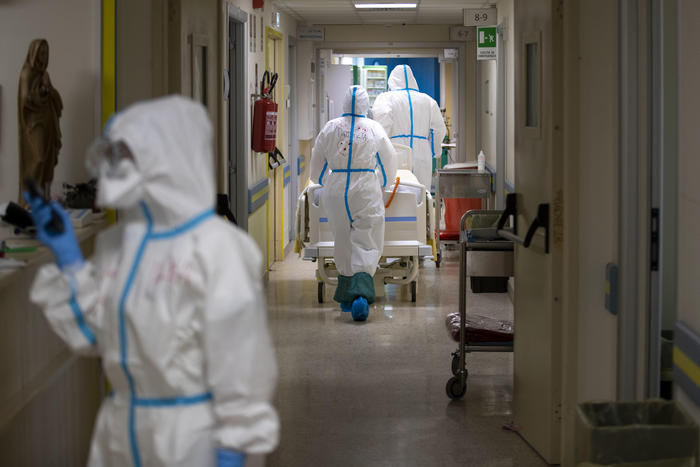(Maintaining the right degree of humidity and adequate air exchange prevents the spread of the virus in indoor environments, especially where the risk is highest, such as hospitals and doctors' offices. This is confirmed by an international study conducted, among others, by Cnr-Isac researchers and published in the International Journal of Environmental Research and Public Health.
It is known that Sars-Cov-2 is not only transmitted by direct contact, but can spread through the air through "droplets", the droplets of nebulized saliva.
"Although the virus itself has dimensions of the order of a hundred nanometers (the diameter of a hair is 50,000-180,000 nanometers), it has been verified that an infected person, through breathing, vocalization, cough, sneezing, can emit an aerosol potentially containing SARS-CoV-2 ", explains Francesca Costabile, researcher at the Institute of Atmospheric and Climate Sciences of the National Research Council (Cnr-Isac).
A study published in the International Journal of Environmental Research and Public Health by Cnr-Isac, in collaboration with the German Leibniz Institute for Tropospheric Research, the Indian CSIR-National Physical Laboratory and the 2B Technologies-Boulder (USA), suggests the appropriate strategies prevention and mitigation of the risk of airborne transmission of the virus
"In addition to composition, the particles of these aerosols vary considerably in size, from less than 1,000 nanometers, the diameter of fine powders, to values greater than 5,000 nanometers, the size of typical respiratory droplets", continues Costabile.
And again: "The relationship between inhaled dose and infectivity for SARS-CoV-2 strongly depends on the size: the ability to penetrate the lower respiratory tract, systemic translocation throughout the human body and attack on particularly vulnerable target organs, first among all the brain ".
The risk, in short, varies drastically with the size of these aerosol particles.
"Inspired by the precautionary principle, the main objective of the work was to recognize, on the basis of data already published, the existence of a risk due to the possible airborne transmission of SARS-CoV-2 in particular indoor environments. And therefore to propose lines simple and clear guide to hospitals, doctors' offices, public places and other similar environments ", warns the researcher Cnr-Isac.
"Robust laboratory results show that transmission of the virus, in environments without solar radiation, is favored by dry and cold conditions. On this basis - indoors with cold, dry direct sunlight and insufficient ventilation - we recommend first of all: to maintain adequate humidification of the indoor air (in the range 40-60%), especially where there are temperatures below 20 ° C, the use of air purifiers, adequate ventilation mechanics even in winter and the measurement of the concentration of carbon dioxide (CO2) in the air, to be kept below 1000 ppm.
Finally, we do not recommend the use of nebulizers in some medical procedures and types of disinfectants for cleaning such as those with hydrogen peroxide.
Without these precautions, the risk could remain while wearing the surgical mask ".
These guidelines are intended to reduce the risk of airborne transmission, for example in hospitals and nursing homes, as few countries, such as Canada, Belgium and Switzerland, have adopted strategies against the potential risk of airborne transmission. SARS-CoV-2, thanks also to the support of scientists.
"We believe that this is one of the most important tasks for research at this particular time", concludes Costabile.
"Our study represents one of the results of the research line outlined within the CNR-Isac with the creation of thematic working groups dedicated to Covid-19 in the period of the lockdown".
(HANDLE).















